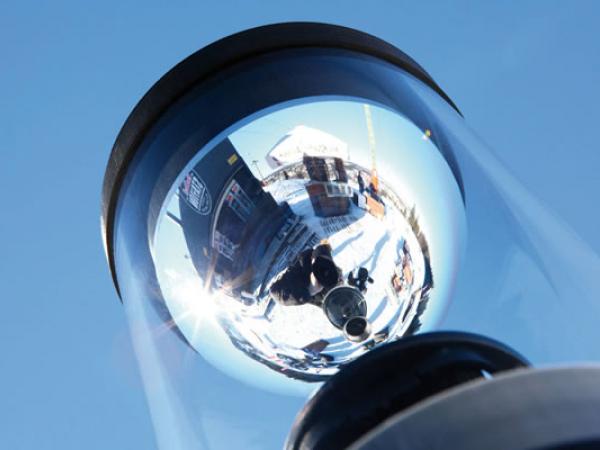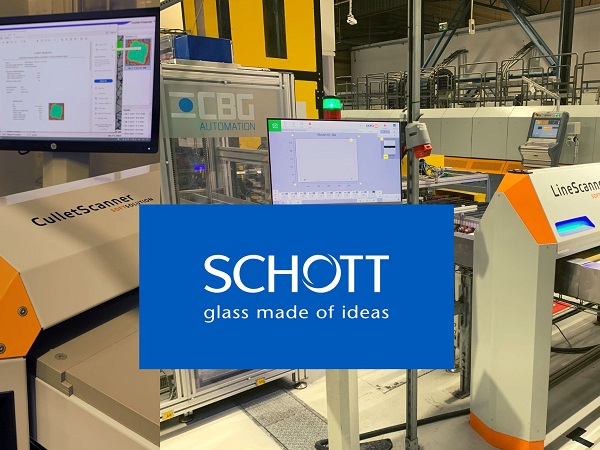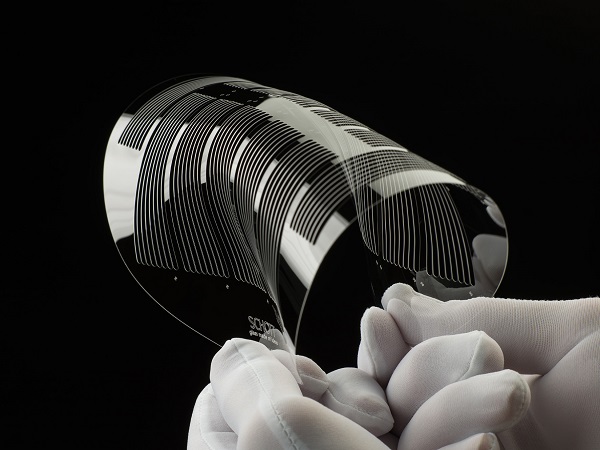
Date: 18 February 2016
Exactly 125 years ago, Otto Schott, the founder of the technology group SCHOTT, discovered this multi-talent material – and created the basis for high-tech applications in the 21st century.
"Major advances in disciplines such as biology, chemistry and medicine have only been made possible by the development of borosilicate glass. Innovations, in a variety of disciplines, are unimaginable without it," explains Dr. Frank Heinricht, Chairman of the Board of Management of SCHOTT AG.
This glass creates entirely new prospects, in 360° cameras, for example. The panorama videos create the impression of being right in the middle of the action and are a top trend on YouTube.
For the perfect panoramic image, the company videostream360 has combined an action mini camera and a high-sensitivity mirror with streaming software.
This construction is then protected by borosilicate glass tubes from SCHOTT. An anti-reflective coating also prevents light reflections and impurities. The new design is being used successfully both indoors and outdoors, for instance in the German TV knowledge program "Galileo," the finale of the music show "Voice of Germany" for live broadcasts of concerts and sporting events.
Borosilicate glass is also used in modern neutron research. "Neutrons characteristically spread in all directions," explains Dr. Christian Schanzer, Operations Manager of SwissNeutronics AG. "Neutron conductors made of BOROFLOAT® borosilicate glass ensure that they stay on course, thanks to special coatings. The conductors have an extremely smooth surface so that particles can be guided to their destination from the neutron source practically without loss," he adds. Research facilities around the world are therefore provided with more precise measuring results when researching novel materials.
The panorama mirror provides circular 360-degree moving images that are recorded by a camera and equalized using a patented process. The surrounding borosilicate glass from SCHOTT protects the device from scratches, environmental effects and reflections. Photo: videostream360
Such different applications are possible because borosilicate glass performs much better than soda-lime glass (“normal” window glass) thanks to its properties. It is highly chemically and mechanically resistant, capable of withstanding high temperatures and temperature fluctuations and has excellent optical properties. For example, compared to soda-lime glass, borosilicate glass is approximately 10% lighter and has a coefficient of thermal expansion that is around a factor of 3 smaller. This makes it considerably more resistant to thermal shock.
.jpg)
The history of borosilicate glass
The first products made of borosilicate glass that Otto Schott brought to market included technical glass for thermometers, laboratory equipment and light bulbs. Mass production of these products at the end of the 19th century turned the small craft producer in Jena into an international industrial company.
Optical borosilicate glass formed another group. Installed in microscopes, telescopes, cameras, and land surveying devices, it provided science with better images than ever before. Research of microorganisms, just beginning at that time, would not have been possible without optical glass from Otto Schott. Thanks to this and other achievements, he is considered the founder of modern glass science.
Borosilicate glass has not only been tried and tested up until now, but continues to find new fields of application. It can be shaped into laboratory glass, glass ampoules, vials and cartridges for medical agents and many other industry applications. More than 20 years ago, SCHOTT developed a new manufacturing process called the microfloat process, with which borosilicate glass is produced in sheets as flat glass. This floated special glass is produced at the work place of Otto Schott in Jena and marketed worldwide under the brand name BOROFLOAT®. It has scores of applications, including being used as a pane in oven doors, as a biochip in modern medical technology, and as a component in stage lights, cinema projectors and diving robots.
Please visit our website for more information:
www.schott.com/borofloat
www.schott.com/borosilicateglass
http://www.schott.com/magazine/english/sol115/sol115_04_360-degree-live-streaming.html
BOROFLOAT® is a registered trademark of SCHOTT AG.
 600450
600450








Add new comment